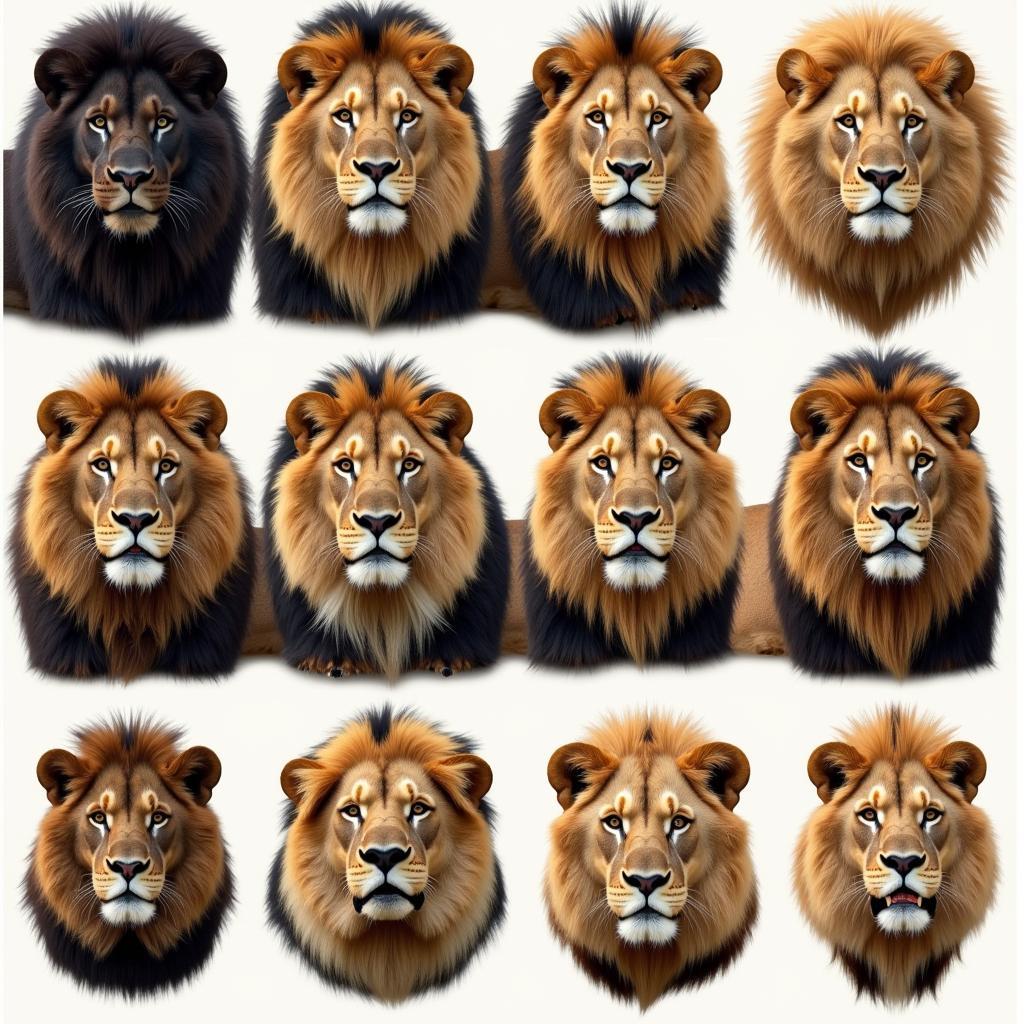African Lion Size: A Majestic Predator’s Physical Prowess
The African Lion Size is a testament to its power and position at the apex of the African savanna’s food chain. This article delves into the fascinating details of these majestic creatures’ dimensions, exploring the variations between males and females, and how their size contributes to their hunting success and social dynamics. Let’s embark on a journey to discover the impressive stature of these iconic big cats.
Understanding African Lion Size: Males vs. Females
African lion size exhibits significant sexual dimorphism, meaning males and females differ considerably in their physical dimensions. Male lions are significantly larger than females, a characteristic that plays a crucial role in their social structure and hunting strategies. Adult male lions typically measure between 1.8 to 2.1 meters in length, excluding their tail, and stand around 1.2 meters tall at the shoulder. Their weight can range from 150 to 250 kilograms. Female lions, on the other hand, are smaller, measuring around 1.5 to 1.8 meters in length and standing about 1 meter tall at the shoulder. Their weight typically ranges from 120 to 180 kilograms.
The Mane: A Symbol of Size and Strength
One of the most distinctive features contributing to the perceived African lion size is the male’s magnificent mane. This thick ruff of hair encircling the head and neck serves multiple purposes. It acts as protection during fights, makes the lion appear larger and more intimidating to rivals, and attracts potential mates. The size and color of the mane can vary depending on factors such as genetics, age, and overall health.
 African Lion Mane Size Variations
African Lion Mane Size Variations
How African Lion Size Impacts Hunting and Social Dynamics
The African lion size is a crucial factor in their hunting success. Their large size and powerful build allow them to take down large prey such as zebras, wildebeest, and even buffalo. While females are the primary hunters, often working cooperatively in groups, the size and strength of males can be essential for bringing down particularly large or aggressive prey. Check out this article on african animals wiki for more information about other African animals.
Size and Social Hierarchy
Within a pride, the African lion size plays a vital role in establishing dominance hierarchies. Larger, more powerful males are more likely to become the dominant male of a pride, controlling access to breeding females and defending the pride’s territory. The barbary lion vs african lion size comparison provides fascinating insights into the variations within the lion family. The imposing presence of a large male can also deter rival males from challenging his position.
African Lion Size: Adapting to the Environment
African lions have evolved to their impressive size over millennia, adapting to the demands of their environment. Their size allows them to survive in the harsh conditions of the African savanna, where resources can be scarce and competition fierce. It’s intriguing to see how different aspects of African culture are represented, like the african elements logos. This emphasizes the importance of understanding the context of these magnificent creatures. The African lion’s size, coupled with their social structure and hunting prowess, makes them one of the most successful predators in the animal kingdom.
Dr. Anika Moti, Wildlife Biologist: “The African lion’s size is a product of natural selection, favoring individuals best equipped to thrive in the challenging environment of the African savanna.”
Prof. Jabari Olufemi, Zoology Expert: “The significant size difference between male and female lions is a clear example of sexual dimorphism, driven by the distinct roles each sex plays in the pride’s survival.”
The African lion size is a remarkable adaptation that contributes to their success as apex predators. From the imposing mane of the male to the agile build of the female, every aspect of their physical dimensions plays a crucial role in their survival and social dynamics. Understanding the african lion size helps us appreciate the magnificent power and ecological significance of these iconic animals. Looking for something more symbolic? Check out this african fossil tattoo.
FAQ
-
What is the average size of a male African lion?
Male African lions typically measure 1.8-2.1 meters long and weigh 150-250 kg. -
How much smaller are female lions compared to males?
Females are generally 20-30% smaller than males in both length and weight. -
What is the purpose of a male lion’s mane?
The mane protects during fights, intimidates rivals, and attracts mates. -
How does size impact a lion’s hunting ability?
Larger size allows for taking down bigger prey and defending kills from scavengers. -
Does size influence social hierarchy within a pride?
Yes, larger males are more likely to become dominant, controlling breeding and territory. -
How has the African environment influenced lion size?
Natural selection has favored larger individuals better suited to survive harsh conditions. -
What is sexual dimorphism in lions?
It’s the significant difference in size and appearance between male and female lions.
For any assistance, please contact us at Phone Number: +255768904061, Email: kaka.mag@gmail.com or visit us at Mbarali DC Mawindi, Kangaga, Tanzania. Our customer service team is available 24/7.

